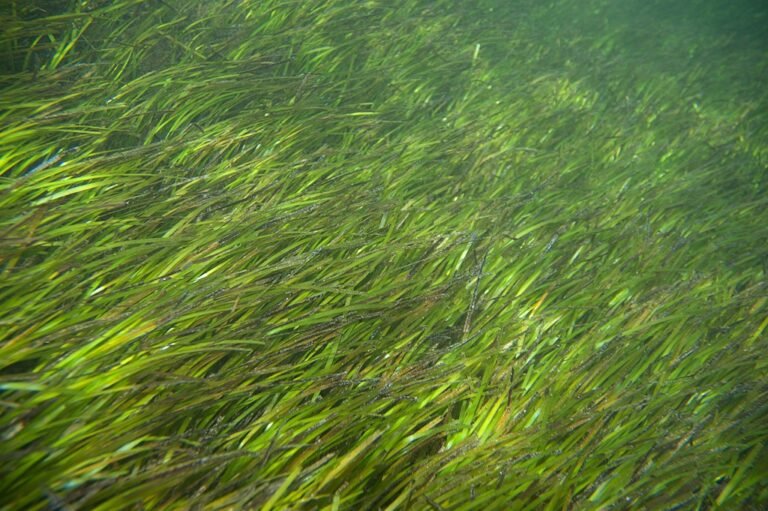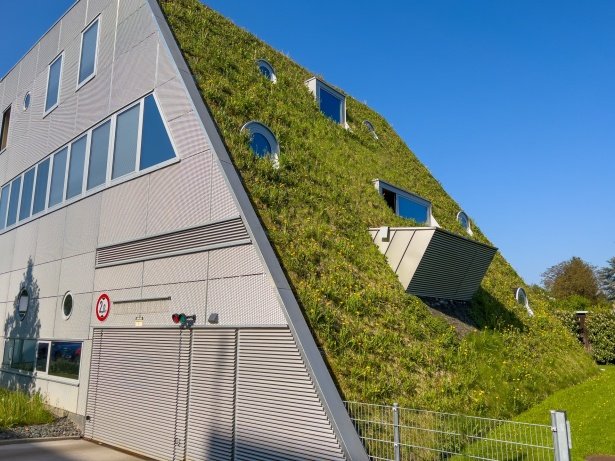20 Best Eco-Friendly Activities to Help Your Environment
What role can you play in the fight against climate change? Our planet has experienced some of the most extreme weather events in recent decades. Not a year goes by without record-breaking temperatures, prolonged droughts, or devastating floods. Climate change is a pressing issue that demands collective action.
Efforts to mitigate the effects of climate change are not solely the responsibility of organisations and environmental activists. Our planet would likely be in a far worse state if we left it entirely to the experts and ignored our own potential to make a difference. We can—and should—adopt eco-friendly lifestyles. Choosing sustainable practices can significantly contribute to environmental sustainability. Every small step toward sustainability matters, and the time to act is now, not later.
The Intergovernmental Panel on Climate Change (IPCC) estimates that global temperatures could rise by 1.5 degrees Celsius (34.7 degrees Fahrenheit) above pre-industrial levels by 2030 if current trends continue. This increase in global temperature could result in more extreme weather events, rising sea levels, and biodiversity loss.

In This Article
- #1. Grow Organic Food: A Healthier, Greener Choice
- #2. Reduce Energy Consumption: Small Changes, Big Impact
- #3. Use Eco-Friendly Products: A Cleaner Home, A Cleaner Planet
- #4. Don’t Trash Leftovers: Combat Food Waste
- #5. Skip Plastic Bottles: Go Reusable
- #6. Consume Less Meat: Healthier Diet, Healthier Planet
- #7. Shop Second-Hand: Promote a Circular Economy
- #8. Repair Rather than Replace: Reduce Waste
- #9. Buy in Bulk: Save Costs and Resources
- #10. Limit Air Travel: Ground Your Carbon Emissions
- #11. Reduce, Recycle, and Reuse: The Three R’s for a Greener Planet
- #12. Avoid Cruise Holidays: High Seas, High Emissions
- #13. Walk, Bike, or Take Public Transportation: Sustainable Travel for Everyday
- #14. Make Your Cleaning Products: Go Green in Your Cleaning Routine
- #15. Shop Local: Support Your Community, Reduce Emissions
- #16. Swap Clothes: Fresh Wardrobe, Zero Waste
- #17. Support Your Community: Be an Eco-Champion
- #18. Donate Clothes: Give Your Wardrobe a Second Life
- #19. Use Half the Amount of Products: A Minimalist Approach
- #20. Plant a Tree: A Simple Act with Major Environmental and Health Benefits
What Does Eco-friendly mean?
Eco-friendly simply refers to actions, practices, ideas, innovations, and products that are harmless to our environment. Eco-friendly practices prioritise environmental sustainability, conservation efforts, and practices focused on reducing waste and lowering greenhouse gas emissions.
A simple definition by the Cambridge Dictionary defines the term “eco-friendly” as “not harmful to the environment or trying to help the environment.”
Why Being Eco-Friendly is Urgent?
The world we live in today faces several environmental challenges, from deforestation and industrialisation contributing to greenhouse gas emissions to air pollution due to plastic waste, and biodiversity loss due to human activities and rapid urbanisation. With all these in perspective, you should understand why adopting eco-friendly practices is a matter of urgency.
According to the World Wildlife Fund (WWF), our planet loses about 18 million hectares of forests every year due to agriculture, commercial logging, and urbanisation. Human activities in the last one hundred years have been nothing but devastating to the natural environment—we have lost hundreds of wildlife species, with more on the brink of extinction. As the planet continues to warm due to climate change, the time to act is now.
Eco-Friendly Activities that Help the Environment
There are countless sustainable activities, but we have listed 20 that you can implement into your daily life.
#1. Grow Organic Food: A Healthier, Greener Choice
Why It Matters: Growing food organically is beneficial for both the environment and human health. Organic farming or gardening not only provides fresh farm produce but also avoids synthetic pesticides and fertiliser use. Whether you own a farm or a small garden, always prioritise sustainable practices to improve crop yield.
Practical Steps
- Growing organic food does not require a large space. You can use your backyard to grow fresh fruits, berries, and vegetables, or plant in pots on your balcony if you live in an urban area.
- Plant native species or drought-tolerant plants that require less water and adapt better to local climates.
Expert Insight: Dr John Reganold, a soil scientist at Washington State University, has emphasised on many occasions that “Organic farming practices can reduce water pollution, soil degradation and erosion, improve soil organic matter, and sequester carbon, which are key issues in modern agriculture. It also helps promote biodiversity, creating a healthier ecosystem.”
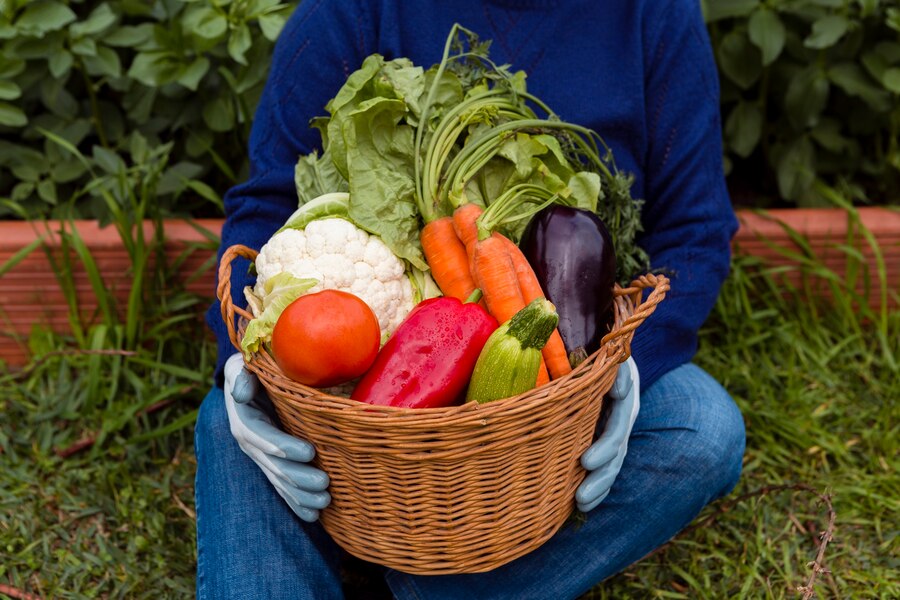
Learn More: 20 Eco-Friendly Business Ideas for Students
#2. Reduce Energy Consumption: Small Changes, Big Impact
Why It Matters: According to the International Energy Agency (IEA), energy use accounts for an estimated 73% of global greenhouse gas emissions. Using energy efficiently in your home will help reduce these emissions.
Practical Steps
- Replace incandescent light bulbs with LED bulbs. LED lights consume 75% less energy compared to traditional incandescent bulbs.
- Always switch off light bulbs and unplug appliances when not in use. Upgrade to energy-efficient appliances to save costs on utility bills.
Case Study: According to the World Resource Institute, households adopting energy-efficient practices were able to reduce their energy bills by 10 to 20% on average and significantly cut down on their carbon emissions.

#3. Use Eco-Friendly Products: A Cleaner Home, A Cleaner Planet
Why It Matters: Conventional cleaning products widely sold in grocery stores can be harmful to human health and aquatic ecosystems. The Environmental Working Group (EWG) warns that the chemicals in these products can negatively affect marine life in nearby water bodies.
Practical Steps
- Choose sustainable cleaning products from reliable brands. Alternatively, make a DIY cleaning product using ingredients like lemon juice, baking soda, and vinegar.
- Avoid products containing harmful preservatives, foaming agents, and detergents.
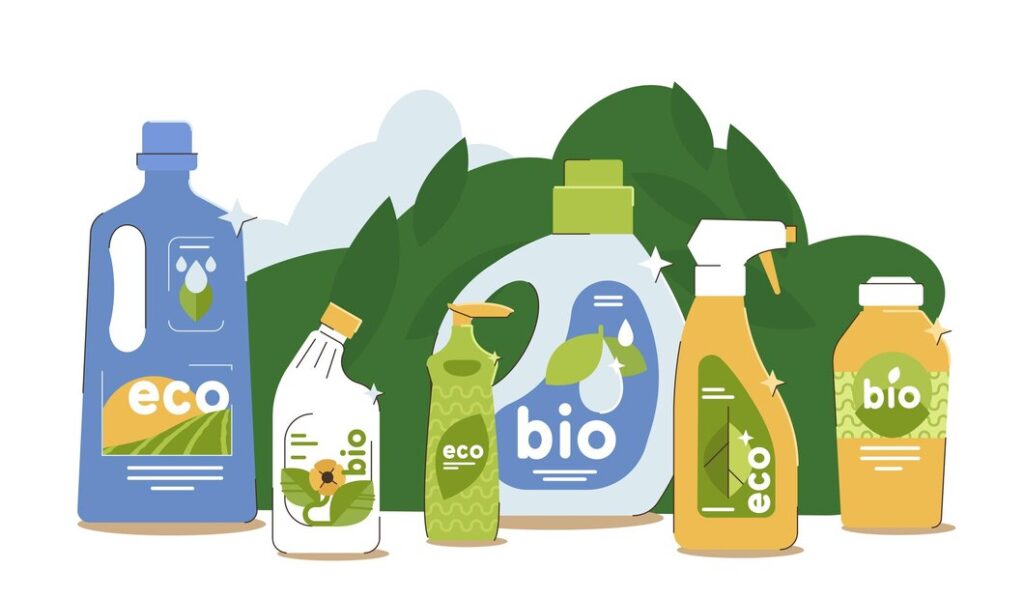
#4. Don’t Trash Leftovers: Combat Food Waste
Why It Matters: Food wastes in landfills generate methane, a potent greenhouse gas. According to the United Nations Food and Agriculture Organisation (FAO), an estimated 1.3 billion tons of food is wasted globally every year. Here are some practical steps in reducing food waste and growing organic food.
Practical Steps
- Make a well-planned list before going to the grocery store. One way to avoid having excessive leftovers is by buying only what you need and learning how to properly store food in the refrigerator.
- Compost food waste instead of throwing it into the trash.
#5. Skip Plastic Bottles: Go Reusable
Why It Matters: Plastic waste continues to pile up in landfills, with some ending up in the ocean. Plastic pollution harms the environment, endangers human health, and threatens marine species. The Plastic Pollution Coalition estimated that over 8 million tons of plastic enter the ocean every year. This problem will only worsen if sustainable measures to replace single-use plastics with eco-friendly alternatives are not prioritised.
Practical Steps
- Replace plastic items, water bottles, bags, food containers, disposable cutlery, and straws with reusable alternatives.
- For an entirely zero-plastic lifestyle, avoid bringing any petroleum-based plastic into your home.
Study: According to a report from National Geographic, about 91% of all plastic waste ever produced has not been recycled. Plastics take an extremely long time to decompose, and even then, they don’t fully decompose but become microplastics.
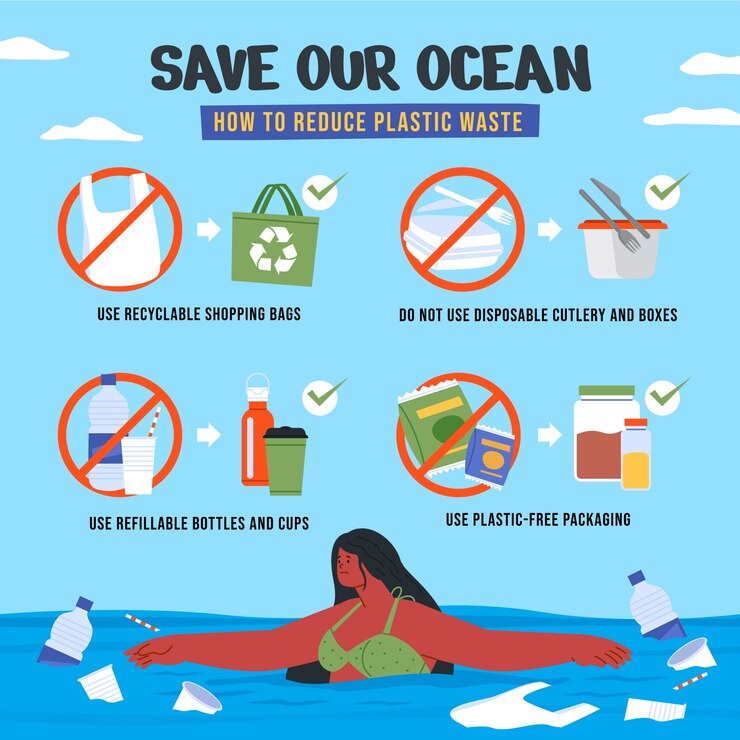
#6. Consume Less Meat: Healthier Diet, Healthier Planet
Why It Matters: The UN Food and Agriculture Organisation reports that meat and dairy production accounts for about 14% of global greenhouse gas emissions. Switching to a plant-based diet or minimising your meat intake can lower these emissions.
Practical Steps
- Eat sustainably by starting with “Meatless Mondays” and watch yourself gradually adopt a more sustainable diet with plant-based meals.
- Replace meat with plant-based protein alternatives like tofu, chickpeas, and lentils.
Expert Insight: Dr Tamsin Edwards, a climate scientist at King’s College London, advises, “Shifting to a plant-based diet is one of the most effective ways individuals can reduce their carbon footprint, as livestock farming is a leading cause of deforestation, water pollution, and biodiversity loss.”
#7. Shop Second-Hand: Promote a Circular Economy
Why It Matters: I recently watched an episode of Inside Africa on CNN, and I can tell you that fast fashion is really bad for the environment. While it’s not often considered, the fact remains that buying second-hand clothes and other items best protects the environment from pollution and reduces resource extraction for new products.
Practical Steps
- Help the environment by purchasing second-hand items from online resale platforms, thrift stores, or local swap events.
- Buy from sustainable fashion brands that use biodegradable fabrics.
Case Study: A study by ThreadUp, discovered that buying second-hand clothing reduces the carbon emissions of clothing production by 82%.

#8. Repair Rather than Replace: Reduce Waste
Why It Matters: Ellen MacArthur supports the concept of a circular economy, where resources are reused and recycled instead of being discarded. The amount of waste in landfills is significantly reduced when we repair faulty items rather than discard them, and this decreases the need for raw materials to make new products
Practical Steps
- Learn basic repair skills online to fix faulty electronics or furniture.
- Attend repair cafés or support local repair services in your community.
#9. Buy in Bulk: Save Costs and Resources
Why It Matters: When you buy in bulk, you save extra cash on purchases and reduce packaging waste.
Practical Steps
- Purchase sustainably and in large quantities of items like grains and nuts.
- Bring a reusable container to the grocery store to avoid plastic packaging.
According to various reliable sources such as bulk buying can reduce food packaging and transportation carbon footprint by an estimated 10 to 20%.
Learn More: 12 Best Green Resolutions for Every Month
#10. Limit Air Travel: Ground Your Carbon Emissions
Why It Matters: The International Air Travel Association (IATA) estimates that air travel accounts for about 3% of global carbon emissions. The aviation industry is one of the fastest-growing sources of CO2 emissions globally.
Practical Steps
- Consider green transportation options when flying is avoidable—taking a bus or train significantly reduces these emissions.
Case Study: In 2020, France became the first country to ban domestic short-haul flights. This policy is expected to reduce its air travel-related emissions by 40% with this green policy.

#11. Reduce, Recycle, and Reuse: The Three R’s for a Greener Planet
Why It Matters: A better way to adopt a zero-waste lifestyle is by reducing, recycling, and reusing. Implementing the three “R’s” conserves resource extraction and reduces pollution.
Practical Steps
- Take recyclable materials, glass, paper, metals, plastics, and even e-waste to designated recycling facilities.
- Reuse durable food containers, bags, and other items that are not single-use plastics.
Case Study: According to the U.S. Environmental Protection Agency (EPA), recycling aluminium conserves about 95% of the energy required to manufacture new aluminium from raw materials.
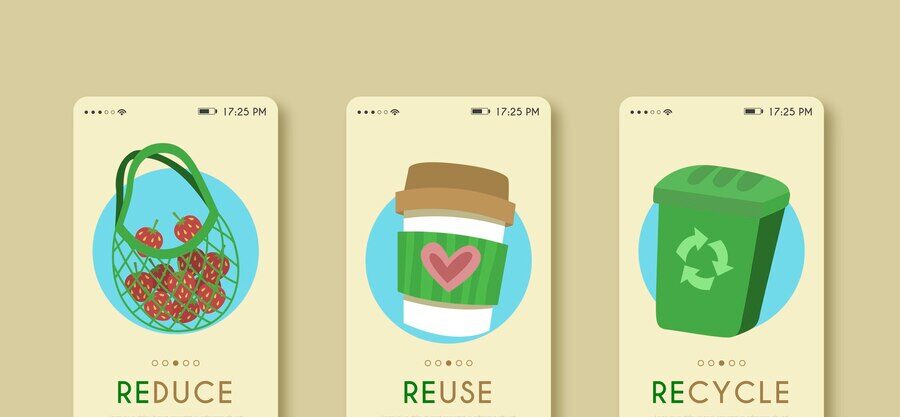
#12. Avoid Cruise Holidays: High Seas, High Emissions
Why It Matters: Fancy holidays on cruise ships are a once-in-a-lifetime experience, but considering the carbon emissions of these large passenger ships, the environmental impact is significant.
Practical Steps
- Choose eco-friendly vacations, spending time in nature by camping or visiting a national park instead of spending days or weeks on cruise ships.
#13. Walk, Bike, or Take Public Transportation: Sustainable Travel for Everyday
Why It Matters: According to the Union of Concerned Scientists, personal vehicles account for almost 30% of U.S. greenhouse gas emissions. Biking, walking and taking public transportation are green transportation alternatives to lower CO2 emissions.
Practical Steps
- Walking or biking not only improves physical health but also reduces carbon emissions due to long-distance car trips. Use an electric, regular bike, or walk for shorter trips instead of driving.
- For long distances, take a bus or train.
Case Study: A study in Copenhagen showed that the Danish capital city saved about 90,000 tons of CO2 emissions annually by encouraging cycling. Copenhagen is one of the greenest cities in the world, with reduced air pollution, and its residents today enjoy better health with less pollution.
#14. Make Your Cleaning Products: Go Green in Your Cleaning Routine
Why It Matters: DIY cleaning products made with ingredients like lemon juice, baking soda, and vinegar are free of toxic chemicals and safe to use. Instead of relying on conventional cleaning products, make your own and prevent pollution in waterways.
Practical Steps
- Get started with your DIY cleaning product with ingredients like lemon juice, baking soda, and vinegar.

#15. Shop Local: Support Your Community, Reduce Emissions
Why It Matters: Buying from local businesses not only promotes the local economy but also cuts down carbon emissions associated with long-distance food transportation.
Practical Steps
- Buy from local farmers’ markets to get the best fresh fruits and veggies. Supporting small local businesses is more sustainable and promotes healthy living with organically grown food.
According to the Local Food Report, locally grown food consumes 17 times less fuel to reach the consumer’s location than imported food.

#16. Swap Clothes: Fresh Wardrobe, Zero Waste
Why It Matters: Swapping clothes is a better way to declutter your wardrobe without generating textile waste. It also reduces the need for new raw materials to make new ones.
Practical Steps
- Host a clothing swap event, inviting your family, friends, and neighbours. Use online platforms to swap old clothes that no longer fit you.

#17. Support Your Community: Be an Eco-Champion
Why It Matters: Join a local environmental organisation to promote sustainable initiatives in your community.
Practical Steps
- Join or donate to environmental organisations that promote conservation efforts and education. Join tree-planting initiatives and community clean-up events.
Learn More: 10 Benefits of Gardening to the Environment and Why You Should Get Involved
#18. Donate Clothes: Give Your Wardrobe a Second Life
What It Matters: Donating your clothes to charity or homeless shelters is a generous act to extend the garment’s life while reducing textile waste in landfills.
Practical Steps
- Donate not-too-worn-out clothes to charity or shelter. Drop off worn clothes at the closest textile recycling centre.

#19. Use Half the Amount of Products: A Minimalist Approach
Why It Matters: When you use less of a specific product, you reduce packaging waste, manufacturing energy, and save money.
Practical Steps
- Experiment with personal hygiene products by using less toothpaste, soap, and shampoo.
#20. Plant a Tree: A Simple Act with Major Environmental and Health Benefits
Why It Matters: Trees are nature’s gift to improve air quality by absorbing carbon dioxide and releasing oxygen. Planting a tree benefits the environment and provides shelter and food for wildlife, preventing soil erosion, flooding, and mitigating climate change.
Practical Steps
- Plant a tree today in any available space in your backyard or driveway, and participate in tree-planting programs in your community.
Expert Insight: Jonah Busch, a former Climate Economics Fellow at Conservation International, emphasises that tree planting, along with natural regeneration, is one of the most cost-effective to significantly reduce carbon emissions. According to his research, in areas of severe deforestation, combining both methods could remove 40% of carbon dioxide from the atmosphere, enhancing both biodiversity and supporting local economies.

Conclusion
The climate crisis is a global emergency that requires collective effort. Individual decisions can make a significant difference in the fight against climate change. We can and should adopt an eco-friendly lifestyle. Every small step or effort toward sustainability matters, and the time to act is now rather than later.

